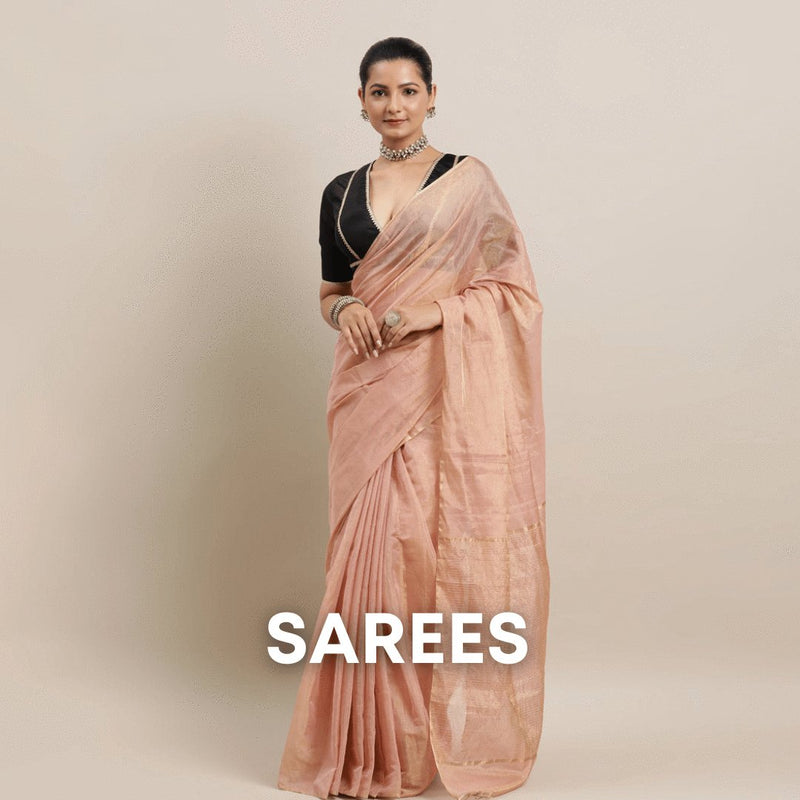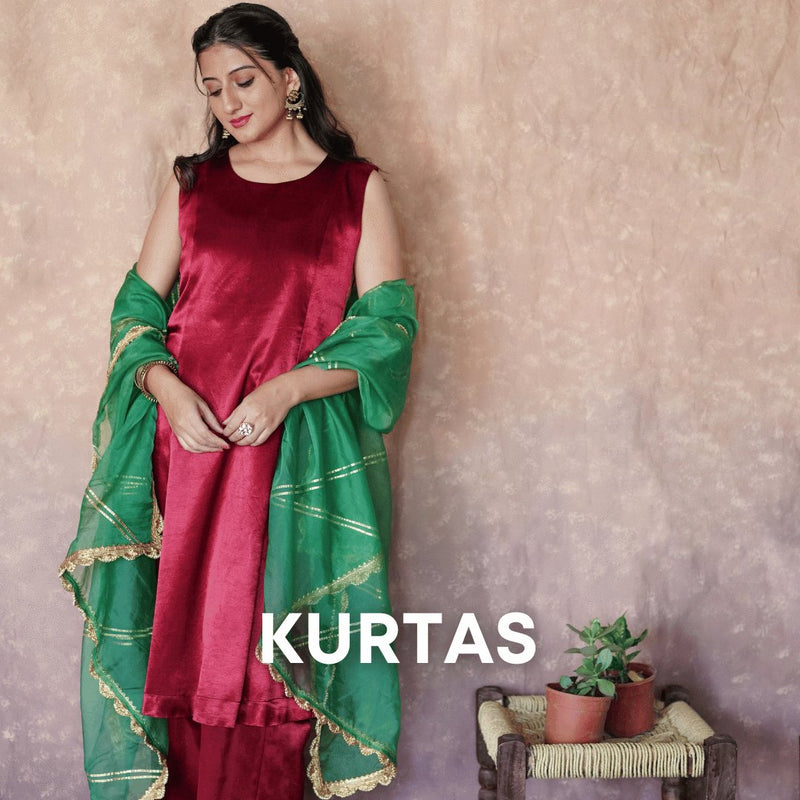Four traditional Indian sarees for four occasions.
A traditional Indian saree will always ensure that you stand out from the crowd. But which weave is perfect for what occasion? Read on to find out, and scroll back up to get the saree blouse of your dreams, tailor-made by Binks.
Traditional Indian Saree #1: Attend a wedding in Kanchipuram silk
Kanchipuram silk sarees are woven from pure mulberry silk. The 150 years old tradition involves hand-woven processing of silk yarn and “zari”( a silver silk thread coated in gold colour). The pure mulberry silk comes from South India, and the silver zari comes from Gujarat. These silk sarees have a pinti that joins the pallu and the body. The silk is called ‘pattu’ in Tamil. Moreover, these sarees are exclusively known for their rich traditional designs, heavy gold borders, and dense fabric in contrasting colours. These silk sarees come in a variety of colours and patterns that can be worn for any wedding festivities. Choose a contrast blouse or pair them with a heavily embroidered blouse – you can never go wrong with Kanchipuram silk!

Traditional Indian Saree #2: Glimmer in party lights in Tussar
Next we have, Tussar silk, also known as Kosa, tusser, or raw silk, is produced in Jharkhand, West Bengal and Bihar. Tussar silk has a rich coarse texture. However, it is a very comfortable fabric that is porous and breathable and can be worn even in summer. Tussar sarees are known to emulate the wilderness of the silkworms from which they are produced, making them perfect for a night of fun and dance with friends and family.

Woven Banarasi Tussar silk saree. Image: Pinterest
Traditional Indian Saree #3: Keep it simple with Mangalgiri silk while out with friends
Mangalgiri silk is a unique variety woven from cotton and pure silk with zari. In addition, these sarees are woven in Mangalagiri, a town in the Guntur district of the Indian state of Andhra Pradesh. Mangalgiri sarees are known for their intricate tribal designs woven in cotton and zari or golden-coloured patterns in small checks. The elegance of these sarees makes them a perfect addition to every woman’s wardrobe. Furthermore, they are lightweight, simple, and stylish! If you are not in the mood to wear a co-ord set to brunch with the girls, Mangalgiri is a great alternative!

Traditional Indian Saree #4: Finally, Head to work in Mysore silk
Manufactured in Karnataka, Mysore silk is characterised by gold zari and a mixture of the softest silk material. Crafted from soft silk fabric, Mysore silk drapes beautifully around the body. A pure Mysore silk sarees get its polished look thanks to the skills of the artisans who have mastered the technique over the years. Moreover, this saree has zaris, which are 65% pure silver and 0.65% of gold. However, the lightness of the saree combined with the minimal designs on the body makes them perfect for office wear. Command a room while wearing a Mysore silk or drape one for an office trip, either way, one can never go wrong with Mysore silk.

YOU MAY ALSO LIKE
Which Sarees Should You Dry Clean, And Which One Should You Wash?
9 Impressive Saree Blouse Alternatives




